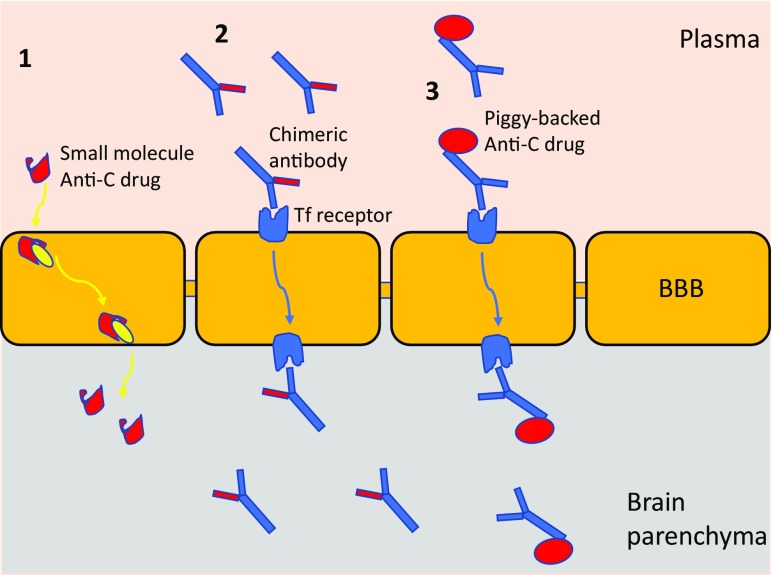Fig. 5.
Getting anti-complement drugs into the AD brain. Carrier-mediated transport (CMT) actively delivers some small-molecule drugs into the brain (1), utilising one of a large number of intracellular transporters. A small-molecule anti-complement drug (illustrated in red) could be designed to engage CMT for delivery across the BBB. For larger molecules, ‘Trojan Horse’ methods can be utilised to deliver, hijacking receptor-mediated transport (RMT) systems. Chimeric antibodies capable of binding a relevant receptor (usually either the transferrin receptor or the insulin receptor) through one arm and carrying an anti-complement site on the other (in red; anti-C1q; anti-C5 etc) will be transported across the BBB and released into the brain parenchyma to inhibit complement. Alternatively, a complement regulator can be coupled recombinantly or chemically to the anti-receptor antibody (3), allowing it to piggy-back across the BBB

